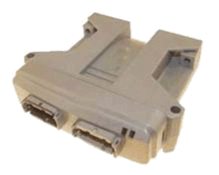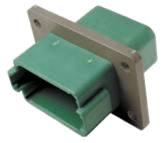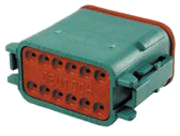


Most components on mobile equipment are going through incremental improvement- -
2% here, less leaks there, no grease required etc…
However, off-the-shelf
control modules are a BREAKTHROUGH which allow you to unleash the potential of
your machine –AND- lower
manufacturing costs. Prune a
multitude of relays, diodes, wires, terminal strips, electrical connectors,
levers, control cables, joystick pilot lines, valve driver modules etc. from
your machine by installing standard control modules from companies like Sauer,
Rexroth, Parker, IFM, and STW. This
new breed of rugged mobile machine controllers have standard programming
interfaces and PC service tools
to greatly enhance serviceability.



HOW WERE
Muscles, Levers and then,
finally- - hydraulics, but with
valves located in the operators lap -or- at the end of a push-pull cable or a
complicated linkage.
HOW ARE THEY CONTROLLED…
Remotely Piloted Hydraulic
Joysticks or Relays, Diodes & Switches or Maybe Custom Designed
Electronic Control Modules.
HOW SHOULD THEY BE CONTROLLED …
With “Off the Shelf” standard electronic control modules.
· Less up front costs … off the shelf components => no tooling, development, environmental testing costs
·
Rugged & Durable
… IP67 sealed (watertight) , high impact plastic case
·
Compact
·
Easier to install troubleshoot and
repair… bolt it down and plug it into the harness with standard, sealed
connectors.
HOW ?
Consult with CaseCAD
engineering to achieve a wiring and control system that exceeds your performance
and cost goals.
|
|
CaseCAD Engineering |
Until very recently either a
bulky, expensive industrial (PLC) was shoehorned on to a mobile machine -OR-
custom printed circuit boards were developed. Custom designed controllers
are very cost effective if the PCB design, testing and programming can be spread
out across thousands of units, but are not an option for custom or low volume
equipment. A sealed “black box” controller is less expensive, smaller,
more moisture resistant and more durable than a PLC mounted inside a NEMA
enclosure. Typically, this type of controller was only an option for large
volume manufacturers like car companies, Cat, John Deere, etc.
Fortunately, several companies are now producing standard controllers that meet
these requirements and have standard programming tools, rather than requiring a
team of software engineers writing “C” code.